国連の持続可能な開発目標とグローバル・イシューズ:歴史的解説
UN Sustainable
Development Goals
国連の持続可能な開発目標とグローバル・イシューズ:歴史的解説
UN Sustainable
Development Goals
皆
さんは、国連の、「持
続可能な開発のための2030アジェンダ」をご存知ですか?——「持
続可能な開発のための2030アジェンダ」に、国連のUNDP駐日代表事
務所へのリンク(日本語)をはっています。くわしくはそち
らをどうぞ!
そ の中には、持続可能な開発目標(SDGs)——通称「グローバル・ゴールズ」——が含 まれます。国連では、視認性に優れたすばらしいロゴタイプとテーマシンボルをデザインしています。それは素晴らしいマークだけでなく、未来の世界(具体的 には2030年まで)に、17の 持 続可能な開発目標(SDGs)を国連に加盟する各国のみならず、地球市民のひとりひとりが具体的に実現しようという提案でもあります。17の持続可能な開 発目標(SDGs)を駐日代表事務所の翻訳とリンクを掲げてみます。この簡潔な目標を、皆さんのまわ りで実現するためには、具体的にどのようなことが必要なのか、各人で考えてみましょう。
ま
た2020年当初から国連は世界保健機関=WHOを通して、新型コロナウィルス感染症
(COVID-19)の流行について懸念しており。2020年秋の時点では、SDGsの目標達成にも、おおきな地球的課題であると指摘しています。詳しく
は(→「COVID-19と国連の持続可能な開発目標」
をご覧ください)
 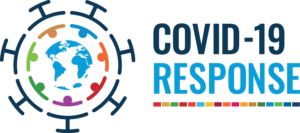 |
 |
 |
 |
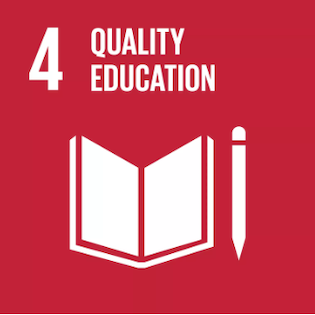 |
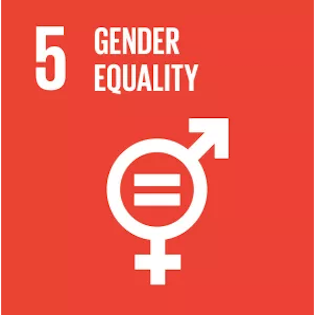 |
 |
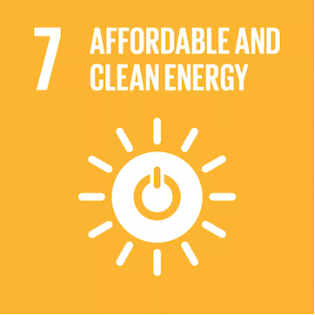 |
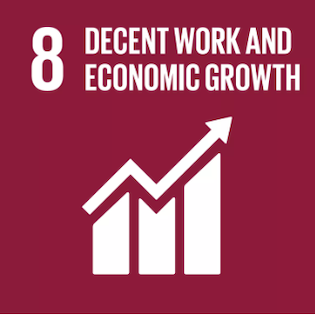 |
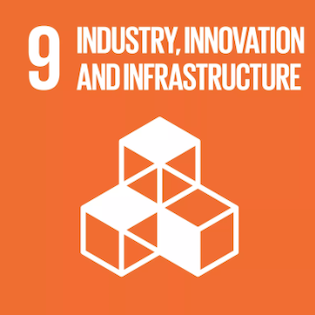 |
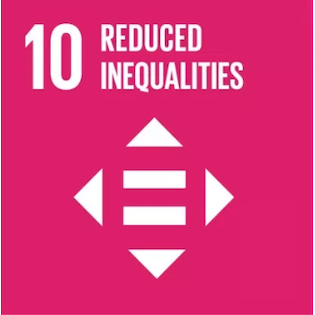 |
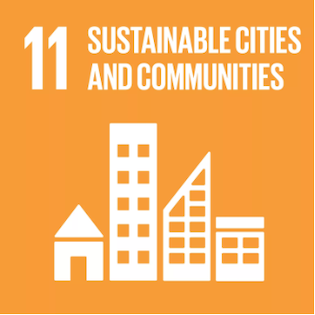 |
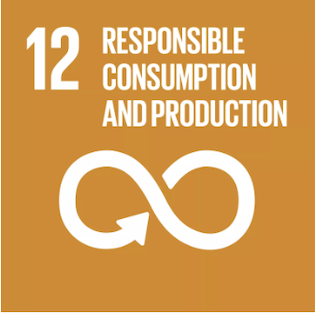 |
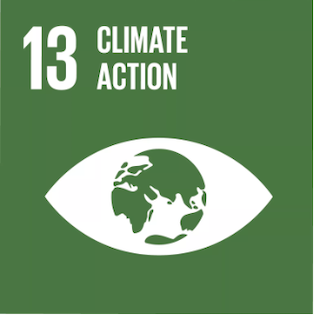 |
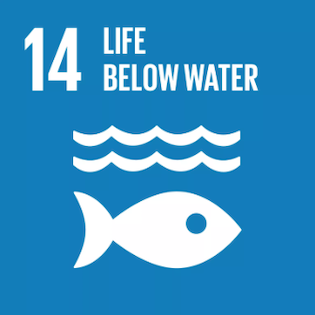 |
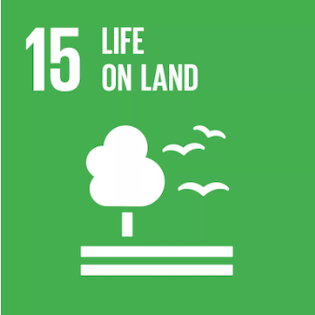 |
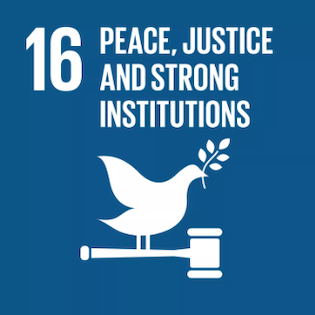 |
 |
他 方、国連では、グローバル・イシューズという、現在、地球が抱えているさまざまな問題 が含まれる大きな課題を18課題にまとめています。
■国連のグローバル・イシュー(global issues Overvies, by UN)
▲▲▲▲◎
この中には、弱い人を助けようという精神があります。こちらに解
説しています。
●SDGs の意義を知るためには、UNDP(United Nations Development Programme)国際連合開発計画がはじまった1965年から考えないとなりません。
Present image of the UNDP
国
連開発計画の現在のイメージ
"The United Nations Development Programme (UNDP) is the United Nations' global development network. It promotes technical and investment cooperation among nations and advocates for change and connects countries to knowledge, experience and resources to help people build a better life for themselves. The UNDP provides expert advice, training and grants support to developing countries, with increasing emphasis on assistance to the least developed countries. UNDP works with nations on their own solutions to global and national development challenges. As they develop local capacity, they draw on the people of UNDP and its wide range of partners. However UNDP offers to help only if the different nations request it to do so.[3] The UNDP is funded entirely by voluntary contributions from UN member states. The organization operates in 177 countries, where it works with local governments to meet development challenges and develop local capacity. It works internationally to help countries achieve the Sustainable Development Goals (SDGs). UNDP was one of the main UN agencies involved in the development of the Post-2015 Development Agenda. To accomplish the SDGs and encourage global development, UNDP focuses on poverty reduction, HIV/AIDS, democratic governance, energy and environment, social development, and crisis prevention and recovery. The UNDP Human Development Report Office also publishes an annual Human Development Report (since 1990) to measure and analyse developmental progress. In addition to a global Report, UNDP publishes regional, national, and local Human Development Reports.[4] Headquartered in New York City, the status of UNDP is that of an executive board within the United Nations General Assembly. The UNDP Administrator is the third highest-ranking official of the United Nations after the United Nations Secretary-General and Deputy Secretary-General.[5]" - Wiki, UNDP.
「国連開発計画(UNDP)は、国連のグローバルな開発ネットワークである。国連開
発計画(UNDP)は、国連の世界的な開発ネットワークで、国家間の技術協力と投資協力を推進し、変化を提唱し、人々がより良い生活を築けるよう、各国を
知識、経験、資源でつないでいます。UNDPは開発途上国に専門的な助言、訓練、助成金による支援を提供しており、後発開発途上国への支援にますます重点
を置いている。UNDPは、世界や国内の開発課題に対する独自の解
決策について、各国と協力して取り組んでいます。現地の能力を開発する際には、UNDPとその広範なパートナーの人材が活用されます。しかしUNDPが支
援を提供するのは、さまざまな国から要請があった場合に限られる。UNDPの資金はすべて、国連加盟国からの自発的な拠出によって賄われている。国連開発
計画(UNDP)は、国連加盟国からの自発的な拠出金のみによって運営されており、177カ国で活動している。UNDPは、各国が持続可能な開発目標
(SDGs)を達成できるよう、国際的に活動している。UNDPは、ポスト2015年開発アジェンダの策定に関与した主要な国連機関のひとつである。
SDGsを達成し、グローバルな開発を促すため、UNDPは貧困削減、HIV/AIDS、民主的ガバナンス、エネルギーと環境、社会開発、危機予防と復興
に重点的に取り組んでいる。またUNDP人間開発報告室は、開発の進捗状況を測定・分析するため、毎年「人間開発報告書」を発行しています(1990年以
降)。ニューヨーク市に本部を置くUNDPの地位は、国連総会内の執行委員会である。UNDP総裁は、国連事務総長、副事務総長に次ぐ国連第3位の高官で
ある」
History of the UNDP, 1965 - present days
国
連開発計画の歴史;1965年から現在まで
Present days, Introduction to
2016-2030 by UN Archive.
"The Post-2015 Development Agenda was a process from 2012 to 2015 led by the United Nations to define the future global development framework that would succeed the Millennium Development Goals. The new framework, starting from 2016 is called Sustainable Development Goals./ The current UN development agenda is centred on the Millennium Development Goals (MDGs)[2] that were officially established following the Millennium Summit of the UN in 2000. The MDGs encapsulate eight globally agreed goals in the areas of poverty alleviation, education, gender equality and empowerment of women, child and maternal health, environmental sustainability, reducing HIV/AIDS and communicable diseases, and building a global partnership for development. The MDG's overall target date is 2015.[3]/ At the 2010 High Level Plenary Meeting of the UN General Assembly to review progress towards the MDGs, governments called for accelerating progress and for thinking on ways to advance the development agenda beyond 2015.[4] After the 2010 High Level Plenary Meeting, the UN Secretary-General Ban Ki-moon has taken several initiatives. He has established a UN System Task Team, launched a High Level Panel of Eminent Persons and appointed Amina J. Mohammed as his own Special Advisor on Post-2015 Development Planning.[5] These processes are complemented by a set of eleven global thematic consultations and national consultations in 88 countries][6] facilitated by the United Nations Development Group (UNDG)."- The Post-2015 Development Agenda.
「ポスト2015年開発アジェンダは、ミレニアム開発目標の後継となる将来の世界的な開
発枠組みを定義するために、2012年から2015年にかけて国連が主導したプロセスである。現在の国連開発アジェンダは、2000年の国連ミレニアム・
サミットを経て正式に策定されたミレニアム開発目標(MDGs)が中心となっている。MDGsは、貧困削減、教育、ジェンダー平等と女性のエンパワーメン
ト、子どもと妊産婦の健康、環境の持続可能性、HIV/AIDSと伝染病の削減、開発のためのグローバル・パートナーシップの構築という分野において、世
界的に合意された8つの目標を包含している。MDGsの全体的な目標期限は2015年である。/MDGsに向けた進捗状況をレビューするための2010年
国連総会ハイレベル総会において、各国政府は、進捗を加速させ、2015年以降の開発アジェンダを前進させる方法を考えるよう求めた。2010年のハイレ
ベル総会後、潘基文(パン・ギムン)国連事務総長はいくつかのイニシアチブをとった。国連システム・タスクチームを立ち上げ、有識者ハイレベル・パネルを
発足させ、アミーナ・J・モハメドをポスト2015年開発計画に関する自身の特別顧問に任命した。これらのプロセスは、国連開発グループ(UNDG)が推
進する11の世界的なテーマ別協議と88カ国での国内協議によって補完されている。)」
"The Millennium Development Goals (MDGs) were eight international development goals for the year 2015 that had been established following the Millennium Summit of the United Nations in 2000, following the adoption of the United Nations Millennium Declaration. The Sustainable Development Goals (SDGs) succeeded the MDGs in 2016. All 191 United Nations member states, and at least 22 international organizations, committed to help achieve the following Millennium Development Goals by 2015: To eradicate extreme poverty and hunger To achieve universal primary education To promote gender equality and empower women To reduce child mortality To improve maternal health To combat HIV/AIDS, malaria, and other diseases To ensure environmental sustainability[1] To develop a global partnership for development[2] The Millennium Development Goals are a UN initiative. Each goal had specific targets, and dates for achieving those targets. The 8 goals were measured by 21 targets. To accelerate progress, the G8 finance ministers agreed in June 2005 to provide enough funds to the World Bank, the International Monetary Fund (IMF) and the African Development Bank (AfDB) to cancel $40 to $55 billion in debt owed by members of the heavily indebted poor countries (HIPC) to allow them to redirect resources to programs for improving health and education and for alleviating poverty."- Millennium Development Goals (MDGs).
「ミレニアム開発目標(MDGs)は、2000年の国連ミレニアム・サミットで採択され
た「国連ミレニアム宣言」を受けて策定された、2015年を目標とする8つの国際開発目標である。2016年にMDGsを引き継いだのが「持続可能な開発
目標(SDGs)」である。191の国連加盟国すべてと少なくとも22の国際機関が、2015年までに以下のミレニアム開発目標の達成を支援することを約
束した: 極度の貧困と飢餓を撲滅すること 普遍的初等教育を達成すること ジェンダーの平等を推進し、女性のエンパワーメントを図ること
子どもの死亡率を減少させること 妊産婦の健康を改善すること HIV/エイズ、マラリア、その他の疾病と闘うこと 環境の持続可能性を確保すること
開発のためのグローバル・パートナーシップを発展させること
ミレニアム開発目標は国連のイニシアチブである。各目標には、具体的な目標とその達成時期が定められている。8つの目標は21のターゲットによって測定さ
れた。進展を加速させるため、G8財務相は2005年6月、世界銀行、国際通貨基金(IMF)、アフリカ開発銀行(AfDB)に十分な資金を提供し、重債
務貧困国(HIPC)加盟国が負っている400億ドルから550億ドルの債務を帳消しにすることで、健康や教育の改善、貧困緩和のためのプログラムに資源
を振り向けられるようにすることに合意した。」
Introduction, 2000-2015, Millennium Development Goals (MDGs). by UN Archive.
Millennium Development Goals (MDGs)
On 8 September 2000, following a three-day Millennium Summit of world leaders gathered in New York at the headquarters of the United Nations, the UN General Assembly adopted some 60 goals regarding peace; development; environment; human rights; the vulnerable, hungry, and poor; Africa; and the United Nations which is called Millennium Declaration (Resolution 55/2).[1] A follow-up outcome of the resolution was passed by the General Assembly on 14 December 2000 to guide its implementation. Progress on implementation of the Declaration was reviewed at the 2005 World Summit of leaders.[2][3] The Declaration includes 8 chapters and 32 paragraphs.
「2000年9月8日、ニューヨークの国連本部で3日間にわたって開催されたミレニア
ム・サミットを受け、国連総会は、平和、開発、環境、人権、弱者、飢餓、貧困、アフリカ、国連に関する約60の目標を採択し、ミレニアム宣言(決議
55/2)と呼ばれた。
2000年12月14日、この決議のフォローアップ結果が、その実施を導くために総会で可決された。宣言の実施状況は、2005年の世界首脳会議で見直さ
れた。宣言には8つの章と32のパラグラフがある。」
++++
"The MDGs were developed out of
several commitments set forth in the Millennium Declaration, signed in
September 2000. There
are eight goals with 21 targets,[6] and a series of measurable
health indicators and economic indicators for each target.[7][8]"
「ミレニアム開発目標(MDGs)は、2000年9月に署名されたミレニアム宣言に示さ
れたいくつかの約束から策定された。8つの目標に21のターゲット[6]が設定され、各ターゲットに対して測定可能な一連の保健指標と経済指標が設定され
ている[7][8]。"
目標1:極度の貧困と飢餓の撲滅
目標1A:1990年から2015年の間に、1日1.25ドル未満で暮らす人々の割合を半減させる
目標1B:女性、男性、若者のまともな雇用の実現
目標1C:1990年から2015年の間に、飢餓に苦しむ人の割合を半減させる
目標2:普遍的初等教育の達成
目標2A:2015年までに、男女を問わず、すべての子どもが初等教育/初等教育の全課程を修了できるようにする
目標3:ジェンダー平等の推進と女性の地位向上
目標3A できれば2005年までに初等・中等教育における男女格差をなくし、 2015年までにすべてのレベルにおいて男女格差をなくす。
目標4:子どもの死亡率の削減
目標4A 1990年から2015年の間に、5歳未満児の死亡率を3分の2に減少させる。
目標5:妊産婦の健康の改善
目標5A:1990年から2015年の間に妊産婦死亡率を4分の3削減する
目標5B:リプロダクティブ・ヘルスへの普遍的アクセスを2015年までに達成する
目標6:HIV/エイズ、マラリア、その他の疾病との闘い
目標6A:2015年までにHIV/エイズの蔓延を阻止し、逆転させる
目標6B:2010年までに、HIV/AIDSの治療を必要とするすべての人々の治療への普遍的アクセスを達成する
目標6C:2015年までにマラリアやその他の主要な疾病の蔓延を食い止め、蔓延を阻止する
目標7:環境の持続可能性の確保
目標7A:持続可能な開発の原則を国の政策とプログラムに組み込み、環境資源の損失を抑制する
目標7B:生物多様性の損失を削減し、2010年までに損失率の大幅な削減を達成する
目標7C:安全な飲料水と基本的な衛生設備を持続的に利用できない人口の割合を2015年までに半減する
目標7D:2020年までに、少なくとも1億人のスラム居住者の生活を大幅に改善する。
目標8:開発のためのグローバル・パートナーシップの構築
目標8A:開かれた、ルールに基づく、予測可能で差別のない貿易・金融システムをさらに発展させる
目標8B:後発開発途上国(LDCs)の特別なニーズに取り組む
ターゲット8C:内陸開発途上国及び小島嶼開発途上国の特別なニーズへの対応
個別目標8D:債務を長期的に持続可能なものとするため、国内的・国際的措置を通じて途上国の債務問題に包括的に対処する。
目標8E:製薬企業との協力の下、開発途上国において必要な医薬品を安価に入手できるようにする。
目標8F:民間セクターとの協力の下、新技術、特に情報通信技術の恩恵を利用可能にする。
Precursors of the Millennium Development Goals (MDGs).
★MDGs(ミレニアム開発目標の前駆形態)
"The Brahimi Report provided the basis of the goals in the area of peace and security[Report of the Panel on United Nations Peacekeeping]. The Millennium Summit Declaration was, however, only part of the origins of the MDGs. More ideas came from Adam Figueroa, Organisation for Economic Co-operation and Development (OECD), the World Bank and the International Monetary Fund. A series of UN‑led conferences in the 1990s focused on issues such as children, nutrition, human rights and women. The OECD criticized major donors for reducing their levels of Official Development Assistance (ODA). UN Secretary-General Kofi Annan signed a report titled, We the Peoples: The Role of the United Nations in the 21st Century. The OECD had formed its International Development Goals (IDGs) and the two efforts were combined for the World Bank's 2001 meeting to form the MDGs.[4]"
Lakhdar Brahimi, 1934- :"is an Algerian United Nations diplomat who served as the United Nations and Arab League Special Envoy to Syria until 14 May 2014.[1] He was Minister of Foreign Affairs of Algeria from 1991 to 1993. He is also a member of The Elders, a group of world leaders working for global peace.[2] Brahimi is a member of the Commission on Legal Empowerment of the Poor, the first global initiative to focus specifically on the link between exclusion, poverty and law. He has also been a Member of the Global Leadership Foundation since 2008, an organization which works to promote good governance around the world. He is currently a distinguished senior fellow at the Centre for the Study of Global Governance at the London School of Economics and Political Science, and a governing board member of the Stockholm International Peace Research Institute.[3] He relinquished his post as UN Special Envoy to Syria on 31 May 2014.[4]"
「ブラヒミ報告書は、平和と安全の分野における目標の基礎となった。しかし、ミレニア
ム・サミット宣言は、MDGsの起源の一部にすぎない。アダム・フィゲロア、経済協力開発機構(OECD)、世界銀行、国際通貨基金から、さらに多くのア
イデアが出された。1990年代に国連が主導した一連の会議では、子ども、栄養、人権、女性といった問題に焦点が当てられた。OECDは、主要な援助国が
政府開発援助(ODA)の水準を引き下げたことを批判した。アナン国連事務総長は、『われら人民』と題する報告書に署名した:
21世紀における国連の役割』と題する報告書に署名した。OECDは国際開発目標(IDGs)を策定し、2001年の世界銀行の会議ではこの2つの取り組
みが統合されてMDGsとなった。
Lakhdar Brahimi, 1934- :
"はアルジェリア出身の国連外交官で、2014年5月14日まで国連およびアラブ連盟のシリア特使を務めた。1991年から1993年までアルジェリア外
務大臣。また、世界平和のために活動する世界的指導者グループ「エルダーズ」のメンバーでもある。ブラヒミは、排除、貧困、法のつながりに特に焦点を当て
た初の世界的イニシアティブである「貧困層の法的エンパワーメントに関する委員会」のメンバーでもある。また、2008年からはグローバル・リーダーシッ
プ財団(Global Leadership
Foundation)のメンバーでもあり、世界中でグッド・ガバナンスの促進に取り組んでいる。現在はロンドン・スクール・オブ・エコノミクス&ポリ
ティカル・サイエンスのグローバル・ガバナンス研究センター(Centre for the Study of Global
Governance)の著名なシニア・フェローであり、ストックホルム国際平和研究所(Stockholm International Peace
Research Institute)の理事も務める。2014年5月31日、国連シリア特使を退任。"
Human Development Reports 1990-2020, by the UNDP.
Human Development Report, Introduction, 1991-1999, by the UNDP.
Human
Development Report 1990, by the UNDP. (In 1990, the UN
Development Programme launched the first Human Development Report.)
3rd development
decade, Introduction, 1981-1990, by UN Archive.
2nd development decade, Introduction, 1971-1980, by UN Archive
1st development decade, Introduction, 1960-1970, by UN Archive
"The UNDP was founded on 22 November 1965 with the merging of the Expanded Programme of Technical Assistance (EPTA) and the Special Fund.[6] The rationale was to "avoid duplication of [their] activities". The EPTA was set up in 1949 to help the economic and political aspects of underdeveloped countries while the Special Fund was to enlarge the scope of UN technical assistance. The Special Fund arose from the idea of a Special United Nations Fund for Economic Development (SUNFED) (which was initially called the United Nations Fund for Economic Development (UNFED).[7] Countries such as the Nordic countries were proponents of such a United Nations (UN) controlled fund. However, the fund was opposed by developed countries, especially by the United States who was wary of the Third World dominating such a funding and preferred it to be under the auspices of the World Bank. The concept of SUNFED was dropped to form the Special Fund. This Special Fund was a compromise over the SUNFED concept, it did not provide investment capital, but only helped to bring pre-conditions for private investment. With the US proposing and creating the International Development Association within the World Bank's umbrella, the EPTA and the Special Fund appeared to be conducting similar work. In 1962, the United Nations Economic and Social Council asked the Secretary General to consider the merits and disadvantages of merging UN technical assistance programs and in 1966, the EPTA and the Special Fund merged to form the UNDP.[8][9][10]"
「UNDPは1965年11月22日、拡大技術援助計画(EPTA)と特別基金を統合し
て設立された。その理由は「活動の重複を避けるため」であった。EPTAは低開発国の経済的・政治的側面を支援するために1949年に設立され、特別基金
は国連の技術支援の範囲を拡大するためのものであった。特別基金は、国連経済開発特別基金(SUNFED)(当初は国連経済開発基金(UNFED)と呼ば
れていた)の構想から生まれた。北欧諸国などは、このような国連(UN)の管理する基金を推進した。しかし、この基金は先進国、特に第三世界がこのような
基金を支配することを警戒し、世界銀行の後援を希望していたアメリカによって反対された。SUNFEDの構想は立ち消えとなり、特別基金が設立された。こ
の特別基金は、SUNFEDのコンセプトに対する妥協案であり、投資資金を提供するものではなく、民間投資のための前提条件をもたらす手助けをするもの
だった。米国が世界銀行傘下に国際開発協会を提案、設立したことで、EPTAと特別基金は同じような活動を行っているように見えた。1962年、国連経済
社会理事会は事務総長に対し、国連の技術支援プログラムを統合することのメリットとデメリットを検討するよう要請し、1966年、EPTAと特別基金は統
合され、国連開発計画(UNDP)が発足した。」
◎ なぜ弱い人を助けないとならないのでしょうか?(ロバート・グッディン先生の回答、 1985)——これらはインペラティブ(命令語法)を形成すると言います
| ロバート・グッディン先生の結論(1985: 206) | |
| Preventing exploitable vulnerabilities: No one should be forced into a vulnerable or dependent position, insofar as this can be avoided. If people are placed in such a position (either through personal choice or natural or social necessity), vulnerabilities/dependencies should be reciprocal and, ideally, symmetrical among all those who are involved. In no case should they be so severe and asymmetrical that one party has exclusive, discretionary control over resources that the other needs to protect his vital interests. | (1)搾取されやすい脆弱な人たちを防ぐこと:回避できる限り、何人も 脆弱な立場や依存的な立場に追い込まれるべきではありません。もし人々がそのような 立場に置かれるなら(個人の選択、あるいは自然または社会的な必要性によって)脆弱性や依存性というのは相互的であるべきで、理想的には関係するすべての 人々の間で対称的なものであるべきです(=弱いものと助けるものはお互いに組みになっているからです)。また、一方の当事者が、他方の当事者が自らの重要 な利益を守るために必要とする資源を、独占的かつ裁量的に支配するような、深刻かつ非対称的なものであってはなりません(=つまりずっと弱いまま、助けら れるままの状態が固定されていてはなりません)。 |
| Protecting the vulnerable: Where
people are particularly vulnerable to or dependent upon you, for
whatever reasons, you have a special responsibility to protect their
interests. Where they are vulnerable to you individually, you must seek
to produce this result directly through your own efforts. Where they
are vulnerable to a group of you, the group as a whole is responsible
for protecting their interests; and you as an individual within that
group have a derivative responsibility to help organize and participate
in a cooperative scheme among members of that group to produce that
result. |
(2)脆弱な人の保護:何らかの理由で、あなたに対して特に弱い立場
(=脆弱な)にある人、あるいはあなたに依存している人に対して、あなたは彼らの利益を保護する特別な責任を負っています。彼/彼女/その人たちが、あな
た個人に対して脆弱である場合、あなたは自分の努力によって直接この保護を実現するよう努めなければなりません。そして、そのグループの中の個人であるあ
なたには、その結果を生み出すために、そのグループのメンバーの間で協力的な計画を組織し、それに参加するのを助けるという派生的な責任があります。 |
| Protecting the vulnerable : a
reanalysis of our social responsibilities / Robert E. Goodin. Chicago :
University of Chicago Press , 1985 |
ロバート・グッディン『脆弱な人を擁護すること』シカゴ大学出版局、
1985年 |
サ イト外リンク
サ イト内リンク
文 献
そ
の他の情報
Copyleft, CC, Mitzub'ixi Quq Chi'j, 1996-2099
For all undergraduate students!!!, you do not paste but [re]think
my
message.

Remind Wittgenstein's phrase, "I should not like my writing to spare other people the trouble of thinking. But, if possible, to stimulate someone to thoughts of his own," - Ludwig Wittgenstein
++
Copyleft,
CC, Mitzub'ixi Quq Chi'j, 1996-2099